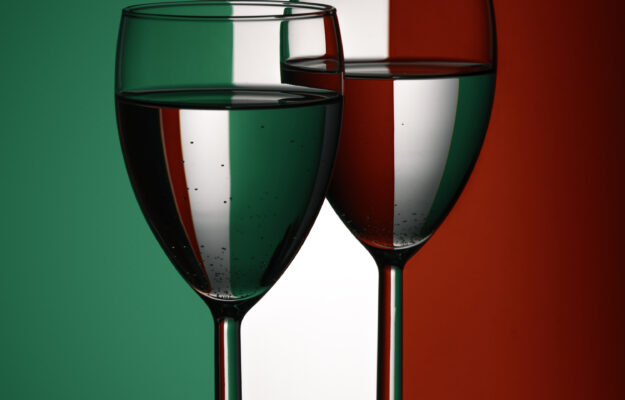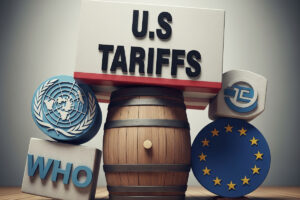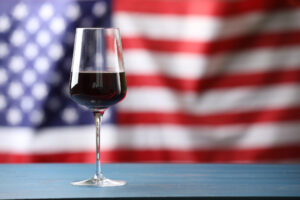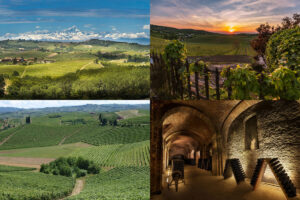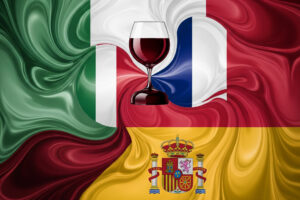They are making their place among the great and historic Italian wines, “filling” the new trend that sees young people, but not only, being increasingly close to this category of products that have come under the attention of even the most important stages, such as that of the Concours Mondial de Bruxelles, which will award, in fact, a trophy to the best low-alcohol or non-alcoholic wine. Products that find fertile ground especially in the U.S., where, for American consumers, they account for 28% of total purchases of Italian wine products in the U.S.: but we are not talking, this time, about Prosecco, nor even Chianti, Pinot grigio or Valpolicella, just to mention a few examples, but, specifically, “low alcohol” products. Those reached $651 million in sales in large-scale distribution and U.S. retail in 2023, for Italian “reds, whites, sparkling wines, flavored products” classified by NielsenIQ as low-alcohol wines, mostly partially fermented or dealcoholized. Bottles, but also cans, from 7 alcohol degrees down, almost totally unknown in Italy, but increasingly present among U.S. Shelves, a country where the wine market is experiencing a transformation phase as well as alcohol consumption trends. Italian wines or wine-based products, sold at an average shelf price of almost $16 per liter, more than double that of their U.S. counterparts ($7) and even 5% more when compared with the average for traditional Italian wines.
But there is no shortage of points to ponder. As the elaborations of the Observatory of Unione italiana vini (Uiv), based on NielsenIQ, note, while it is true that the vineyard from which they are born is Italian, the business is in the vast majority of cases the prerogative of companies in the stars and stripes (80% of the value of sales), which import the finished and labeled product from the Belpaese and resell it on the U.S. market. A made-in-Italy production for a made-in-U.S. business, with Italian wineries and companies mostly relegated to production and bottling. A paradox, Uiv points out, for the wine superpower and for Italian style, which also pulls on a category, the “low” category, that is relatively young and, except for the last year, the protagonist of a ride that, thanks to the change in tastes among the various generations and ethnic groups in the country, has led them to be a choice that is no longer secondary to classic wine.
But there is no shortage of points to ponder. As the elaborations of the Observatory of Unione italiana vini (Uiv), based on NielsenIQ, note, while it is true that the vineyard from which they are born is Italian, the business is in the vast majority of cases the prerogative of companies in the stars and stripes (80% of the value of sales), which import the finished and labeled product from the Belpaese and resell it on the U.S. market. A made-in-Italy production for a made-in-U.S. business, with Italian wineries and companies mostly relegated to production and bottling. A paradox, Uiv points out, for the wine superpower and for Italian style, which also pulls on a category, the “low” category, that is relatively young and, except for the last year, the protagonist of a ride that, thanks to the change in tastes among the various generations and ethnic groups in the country, has led them to be a choice that is no longer secondary to classic wine. A paradox, the one about “low”, which is even more evident when looking at “no alcohol” wines: these are wines that, while they start from low numbers, within two years have doubled their sales in the U.S., now standing at $62 million, according to the Uiv Observatory. Italian zero-alcohol products on U.S. shelves are few, sales amounting to just $4.5 million (+39% over 2022) with an average price of $14 per liter. This is a residual share of the Italian presence (7% of the total), which becomes miniscule when one considers that 90% of sales are attributable to a single company, American for that matter, which buys finished products in Italy and markets them under its own brand name. In practice, the no-alcohol segment directly managed by Italian companies is worth less than $500,000 in the US. A made-in-Italy wine contracting along the lines of the scenario highlighted for low alcohol, made even more evident by the impossibility for the Italian wine business to access a business, that of dealcoholates, the UIV continues, blocked by the laws in force in the Belpaese, but not in Europe. In the U.S., in addition to U.S. brands, totally dealcoholized zero-degree wines produced by Spanish, German, French and New Zealand companies are already sold, benefiting from regulations in line with those in Europe. For Uiv (Italian Wine Union) secretary general Paolo Castelletti: “The low-alcohol segment can represent an opportunity even and especially where the traditional product struggles, as shown by the 20-year record of wine left in the cellar at the end of the last harvest year. Today, in order to make low-alcohol wines, Italian producers have three paths: using wine as a base for flavored drinks, producing wines from partially fermented musts, or - in case they want to proceed with dealcoholization - delegating the production process to direct competitor European countries”. It is precisely the segment of dealcoholated wines that seems to be the most interesting in the medium term, able to intercept the health trends taking place in the country, which is increasingly oriented to reduce the intake not only of alcohol but also of sugar. A category, that of Nolo (low and no alcohol), considered by many companies to have the greatest potential for qualitative growth. In Italy, reports Unione italiana vini, it is not getting off the ground: “Uiv has long been urging regulatory intervention to regulate a production that the European Union has authorized”, Castelletti said, “for more than two years. Net of the draft decrees, on which we have highlighted the perplexities of the wine sector, we are the only ones who have not yet implemented the EU regulation, with obvious competitive disadvantages compared to EU producers. We, therefore, believe that the government must deal with this no longer derogable issue as a matter of urgency, clearly defining a clear perimeter of action together with the sector”. With the paradox of finding no and low-alcohol wines from foreign competitors in the supermarket next door, now ahead of research and experimentation in the segment that is making progress day by day.
Italian low alcohol, represented by both wine-based flavored products and real wines, is worth $651 million in the U.S., nearly 70% of the total category (7 to 2 proofs), which overall in 2023 reached $943 million and nearly 110 million bottles sold. Italian origin, the queen of the market, can be traced, among still wines, mainly to reds (39%, at $254 million), followed by Moscato (103 million) and rosé (23 million).
Copyright © 2000/2025
Contatti: info@winenews.it
Seguici anche su Twitter: @WineNewsIt
Seguici anche su Facebook: @winenewsit
Questo articolo è tratto dall'archivio di WineNews - Tutti i diritti riservati - Copyright © 2000/2025










